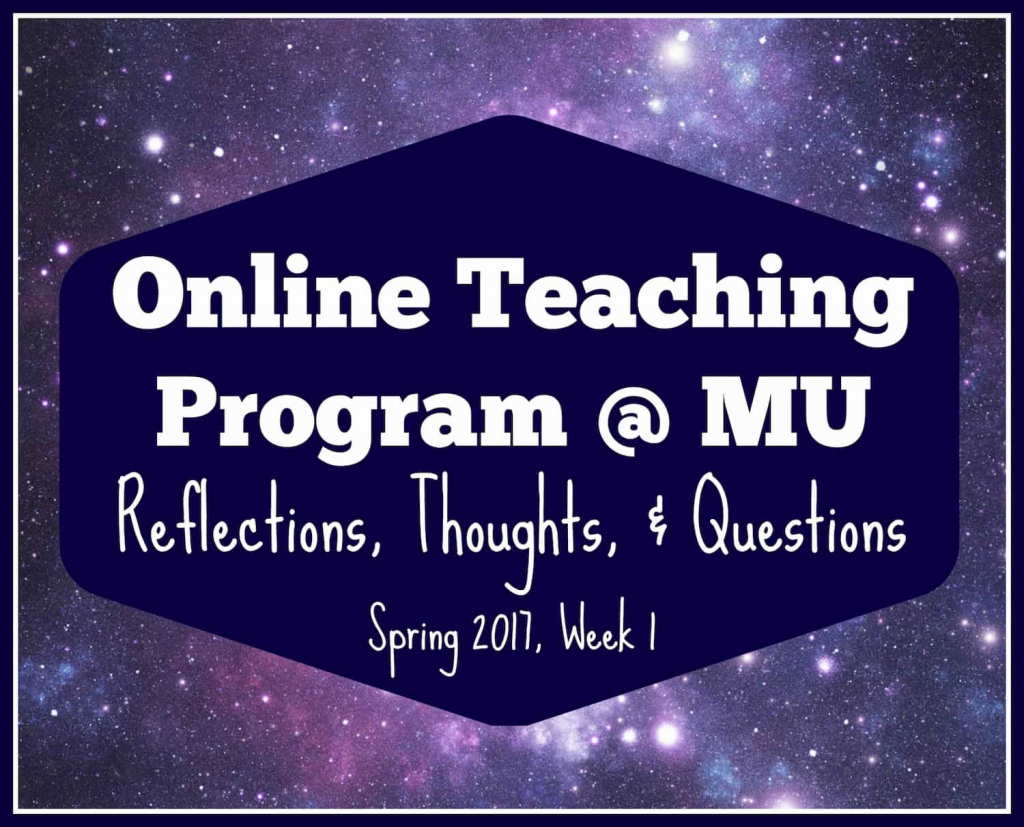I started an exciting and very different season of my life two weeks ago…a yearlong sabbatical during which I’ll be earning an Online Teaching endorsement from Millersville University. In reality, I think of my sabbatical as part of my maternity leave where I’ll be “working” part-time hours instead of my usual 40-50 hours a week at school. That’s not to say that being a parent isn’t work…but that’s another blog post.

For the past year, I’ve been pondering what a school library could look like in a blended school, specifically a public school.
What would I imagine for a space and curriculum that would serve both online students, traditional classroom students, and students whose education is comprised of both?
It’s a truly GIGANTIC question, and one that I’m going to attempt to tackle over the next 12 months. I hope to blog about my thoughts throughout the program…however, I also hoped to blog more last summer and on my maternity leave. Here I am with a 6-month-old impatiently vying for my attention next to me and 4 blog drafts that are nowhere near finished. I’m not going to make promises I can’t keep.
But back to my big question. At this moment, I see online teaching as having great potential for both positive and negative effects, just like any tool, and every educational technology of the past several decades. The exciting part is that online teaching has the potential to promote more personalized instruction for students, more opportunities for students to learn and study their interests, more flexibility for teachers in curriculum content, a more reasonable workload for teachers as far as time and energy, and a way to promote better home-work/school balance among teachers AND students.
Like any tool, however, it could also be used to promote negative outcomes: a restrictive, locked-down curriculum, large class sizes with underpaid teachers, excessive use of teachers’ time and energy in a way that interferes with the rest of their lives, and a lack of respect for what is actually best for students’ needs.
The key difference between these two scenarios is who has the power to make decisions. Do administrators seek out and value teachers’ expertise when designing curriculum, creating classes, and evaluating the needs of students? Does the principal/director have businesses or sponsors that desire profits or specific outcomes? The politics can be played both ways.
With all that said, here’s my current, perhaps utopian, idea for a public school library serving both online and traditional students:
- A large, welcoming space, like a shared living room or coffee shop
- Bookshelves (yes, with real paper books) organized around the room’s perimeter and scattered amidst “centers” designed for different uses.
- Centers might include: an area for quiet study, reading, or relaxation, (perhaps a tech-free zone to figuratively and literally unplug), an area for creating and making (a makerspace), several collaborative areas for students to meet, discuss, and work together in groups, and an always-staffed area for help with information literacy and research requests.
- Ideally a 100% flexible schedule would best serve students as MANY research studies have shown. In most elementary schools, however, teachers will still need (and deserve) a planning period. If the library must be used as a “special,” then at least some of the teacher-librarian’s time will be required to supervise these students. The majority of the teacher-librarian’s time should be available for students and staff using the library space and for those using the online services.
- An online Ask-the-Librarian service for questions and research help, easily accessible from the library website on any device.
- An administration that supports online students using the library with adult supervision. The teacher-librarian is not a babysitter and shouldn’t be used as such, however, an online student can gain a LOT from both the teacher-librarian and the library space to enrich and enhance his/her education.
- A dedicated, self-paced orientation and information literacy/research course for each grade level. Once completed in the older grades, it could unlock more library privileges…for instance, the ability to hold a book or ebook, waiving a late fine, access to the Ask-a-Librarian service. By requiring students to take this course, they would learn both about the library’s resources and how to use the library independently. It would also save the teacher-librarian valuable time in answering very basic questions.
I’m sure I’ll add to my vision for an elementary school library of the future as my program unfolds, and I learn more about the unique demands of online teaching. I hope you’ll come along on the journey with me, and write comments and questions that we can explore together.